Latest News: Participating again in Water, Energy, Technology & Environment Exhibition (WETEX-2024)
Flow Transmitter device is used to measure the flow of liquids in pipelines and convert the results into proportional electric signals that can be transmitted to distant receivers or controllers.
Selection/Application of Flowmeters:
Clean Liquid/Gases: Orifices, Venturi, Annubar, Variable Area, Magnetic (Only Liquids), Ultrasonic, Vortex, Coriolis Mass Flowmeters
Dirty Liquids: Most Suited is Magnetic/Coriolis Mass Flowmeter while Venturi Meters is with limited applications.
Dirty Gases: Most suited is Vortex Flowmeters while Venturi Meters/Variable Area Flowmeter is with limited applications.
Corrosive Liquids: Magnetic Flowmeters/Ultrasonic Flowmeters
Viscous Liquids: Coriolis/Magnetic/Positive Displacement Meters.
Abrasive Slurries: Magnetic Flowmeter/Coriolis Flowmeters.
Saturates Steam: Most Suited is Orifice DP Meters/Vortex Flowmeters while Venturi Meters/Variable Area Meters is with limited application.
Super-Heated Steam: Most suited is Orifice DP Meters while Venturi meters is with limited applications.
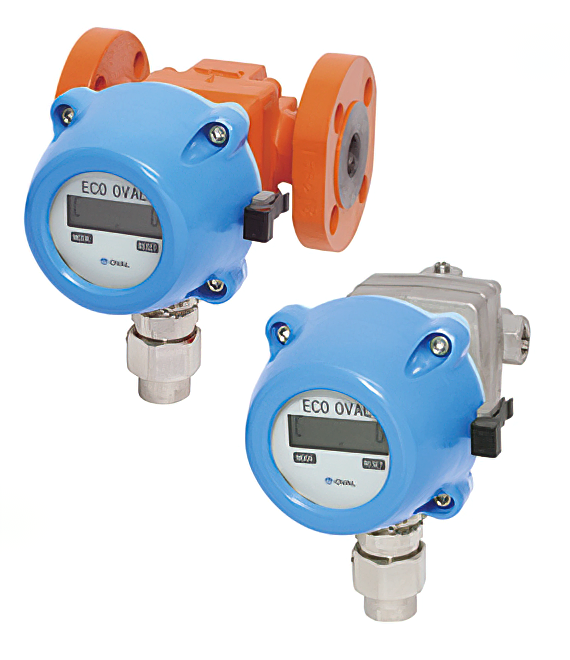
Volumetric Flowmeter
It measure the fluid volume passing through a specific location in a set period of time. Volumetric flow meters provide an instantaneous analog, digital, or pulse output of the volumetric flow rate of the liquid or gas.
Differential Head Type: It can be classified as Orifice Plates, Venturi Meters, Annubar.
Orifice Plates: Concentric orifice plates is the most commonly used. Segmental & Eccentric orifice plate is used for fluids containing suspended solids.
- Features: No Limitation for Design pressure and temperature, maximum size is as per the pipe size.
- Applications: Cryogenic / clean gases & liquids/ Steam (saturated/superheated).
- MOC: Steel/Monel/nickel/ haste alloy.
- Advantages: Easy to install between flanges, inexpensive, No limitations on the materials of construction, line size and flow rate, no process interruption for the exchange of DP transmitter.
Venturi Meters: It measures flow rates by constricting fluids and measuring a differential pressure drop. In the upstream cone of the Venturi meter, velocity is increased, the pressure is decreased.
- Features – No Limitation for Design pressure and temperature, Limited by DP transmitter/pipe press. Ratings.
- Applications – Clean Liquids, Clean Gases.
- Limited Applications – Dirty /corrosive/viscous Liquids & Dirty gases.
- MOC – cast iron/ carbon steel/ SS/Monel, Titanium, Teflon, Hastelloy, Naval Bronze/haste alloy.
- Advantages – Lower head losses than orifice plates reducing the capital expenditure on pumping eqpt. / save pump energy costs. No process interruption for the exchange of DP transmitter. Can be used for temperature extremes/ High Temperatures.
Annubar Flowmeter: This is a device used to measure the fluid flow (liquid, vapor, or gas) in a pipeline. The flow is measured by creating a differential pressure.
- Features: Design pressure is Upto 97 bars (38 Deg.C) / 55 bars (370 Deg.C) and Design Temperature is Upto 400 Deg.C.
- Application – Clean Liquids, Gases and Steam.
- MOC – Brass / steel/ stainless steel/ Hastelloy.
- Advantages – The integral manifold head allows direct mounting of DP transmitters. Insertion/ installation without system shutdown and Very Low Pressure Drop.
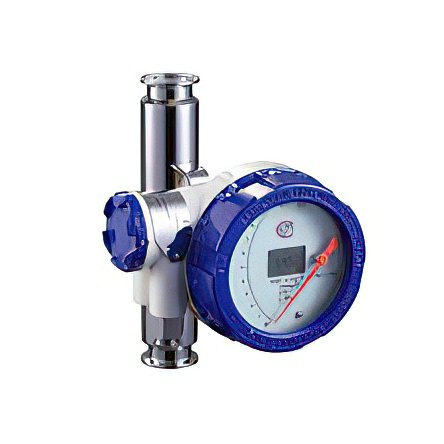
Variable Area Flowmeters/Rotameters
Variable Area Flowmeters/Rotameters are one of the widely used common flowmeter types. It consists of a vertical glass or plastic tube. The size of the tube varies from top to bottom; because of which it got its name as variable area flowmeter. Inside the tube, there is a free-moving metering float.
- Features – Design Pressure is Upto 350 PSIG (GLASS TUBE) / 720 PSIG (METAL TUBE) while Design Temperature is Upto 400 Deg.C (GLASS TUBE) / 538 Deg.C (METAL TUBE).
- Applications – Clean Liquids, Gases and Vapors.
- Flow Range – Upto 920 cub.m/hr for liquids & 2210 cub.m/hr for gases.
- MOC – Borosilicate glass/ brass / steel/ stainless steel/ Hastelloy
- Advantages – Simple, robust and linear output. It does not require external impulse or lead lines. Pressure drop is minimal and fairly constant.
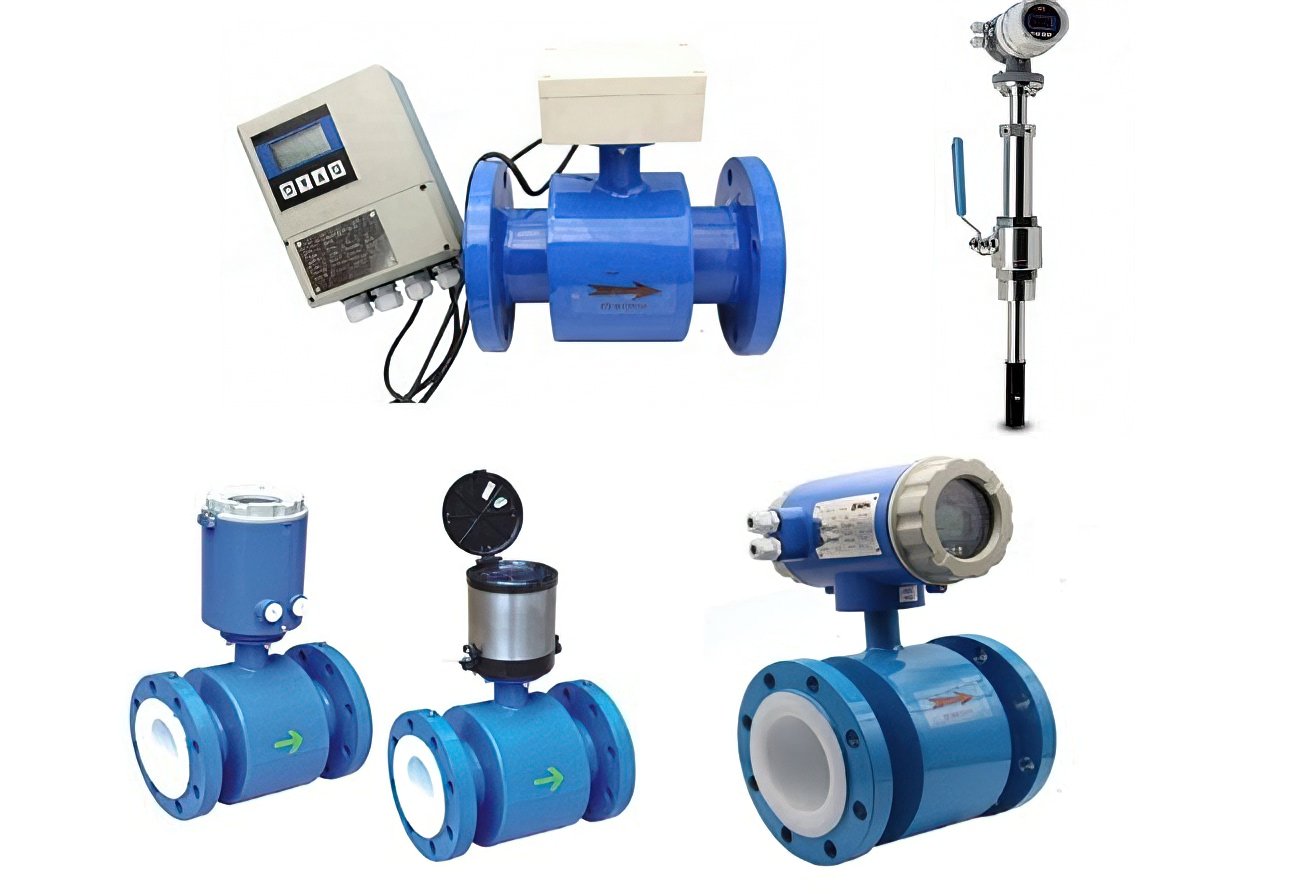
Magnetic Flowmeters
It operates on Faraday’s Law of magnetic induction when a conductive fluid moves in a magnetic field, a voltage is generated between two electrodes at right angles to the fluid velocity and field orientation.
- Features – Design Pressure is Upto 20 BARS to 172 BARS and Design Temperature: Upto 120 Deg.C with Teflon liners / 180 Deg.C with ceramic liners.
- Sizes – 2.5 mm to 3000 mm.
- Fluids – Liquids (clean/ corrosive/dirty/viscous/ slurry).
- MOC – Liners: ceramic/ Teflon/rubber: Electrodes: Platinum/ Hastelloy/SS.
- Advantages – Flow rate unaffected by fluid density, consistency, viscosity, turbulence, or piping configuration. Highly accurate due to the absence of moving parts/ external sensing lines. Corrosion-resistant using Teflon liner and platinum electrodes. Wide flow measuring ranges & no pressure drop.
Vortex Flowmeters
An obstruction is placed across the pipe bore at right angle to fluid flow. As fluid flows, vortices are shed from alternating sides of the body & this shedding frequency is directly proportional to fluid velocity.
- Features – Design Pressure: 138 bars; Design Temperature: -200 Deg. C to 400 Deg.C.
- Sizes: 15 mm to 300 mm.
- Fluids: Gases (clean/ dirty) and clean liquids.
- Velocity range: 0.3 to 10 m/s (liquids) and 6 to 80 m/s (gases).
- MOC: mostly in stainless steel, some in plastic.
- Advantages – Minimal maintenance, no moving parts. Calibration using fluid flow not required & unaffected by viscosity, density, pressure, and temperature within operating specification. Digital or analog output.
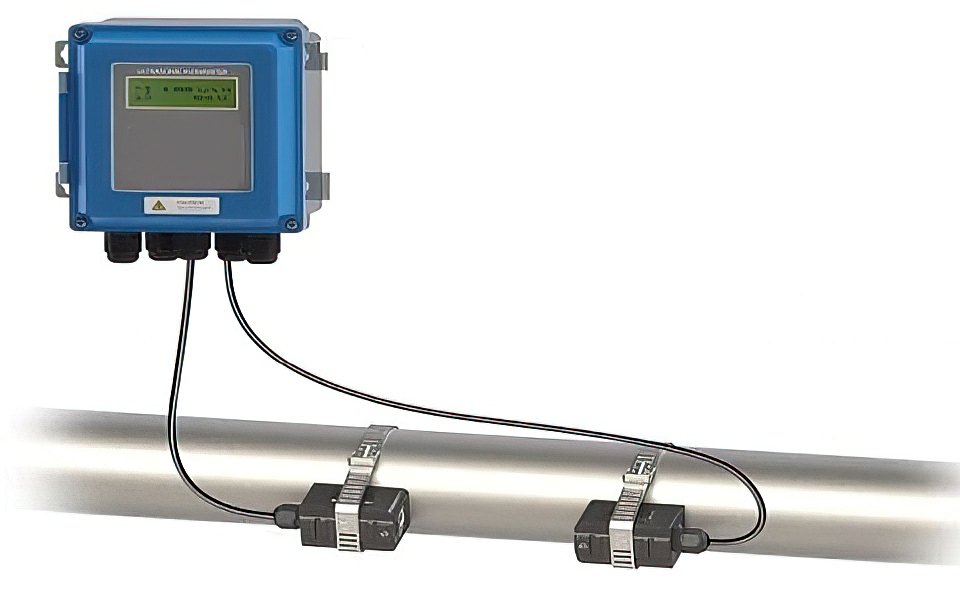
Ultrasonic Flowmeters
A pair of transducers, each having its own transmitter and receiver, are placed on the pipe wall, one (set) on the upstream and the other (set) on the downstream.
- Features – Design Pressure: 207 bars (insertion type)/ unlimited (clamp on type) while Design Temperature: -180 Deg. C to 260 Deg.C.
- Fluids: clean gases, clean/corrosive liquids (with little/no solids/ bubbles).
- Velocity range: 0.3 to 15 m/s
- MOC: mostly in stainless steel/alloyic
- Advantages – No obstruction/moving parts in the flow path; No pressure drop; Low maintenance cost; Can be used in corrosive fluid flow.
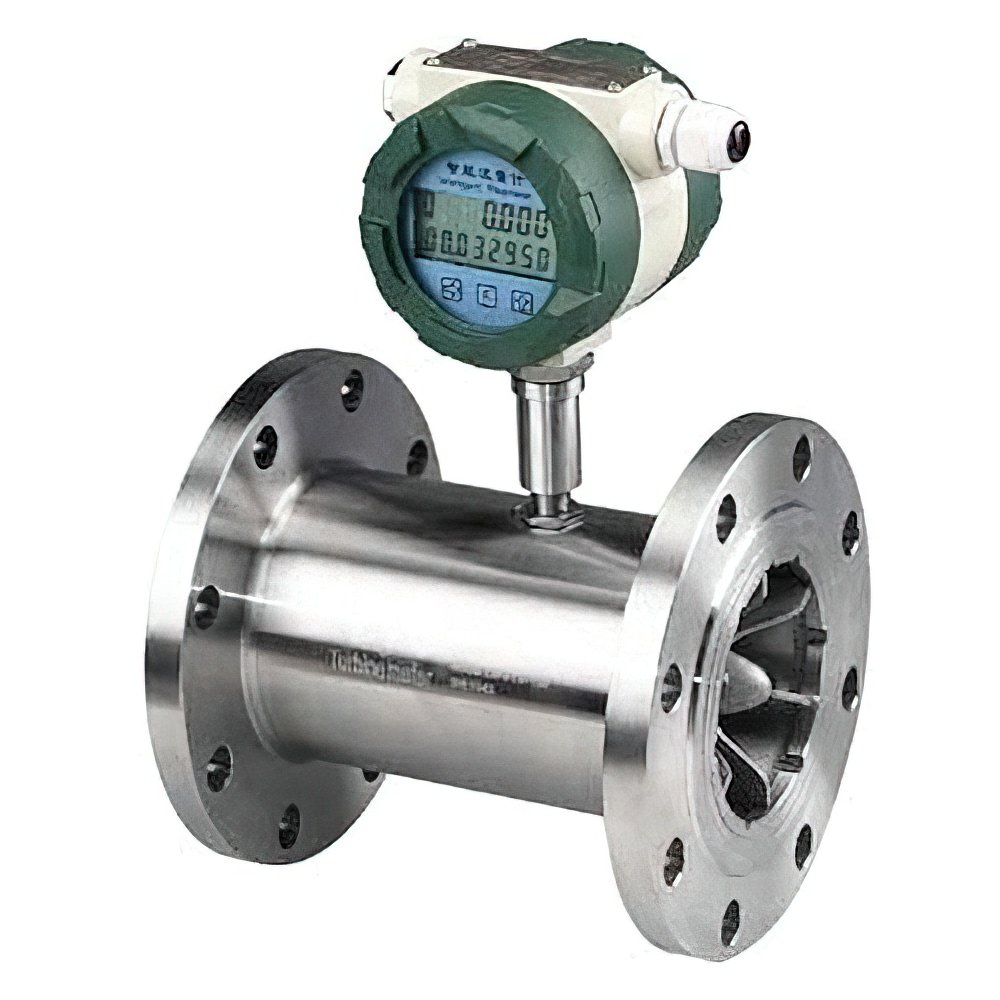
Turbine Flowmeters
It Consists of a multi-bladed rotor mounted at right angles to the flow & suspended in the fluid stream on a free-running bearing. Speed of rotation of rotor proportional to the volumetric flow rate.
- Features – Design Pressure: 1500 PSIG while Design Temperature: 150 Deg. C.
- Fluids: Clean liquids/ gases and vapors.
- Velocity range: 0.3 to 15 m/s.
- MOC: mostly in stainless steel/ Hastelloy
- Advantages: Very accurate. Commonly used to prove other meters. Digital output provides for direct totalizing, batching, or digital blending without reducing accuracy.
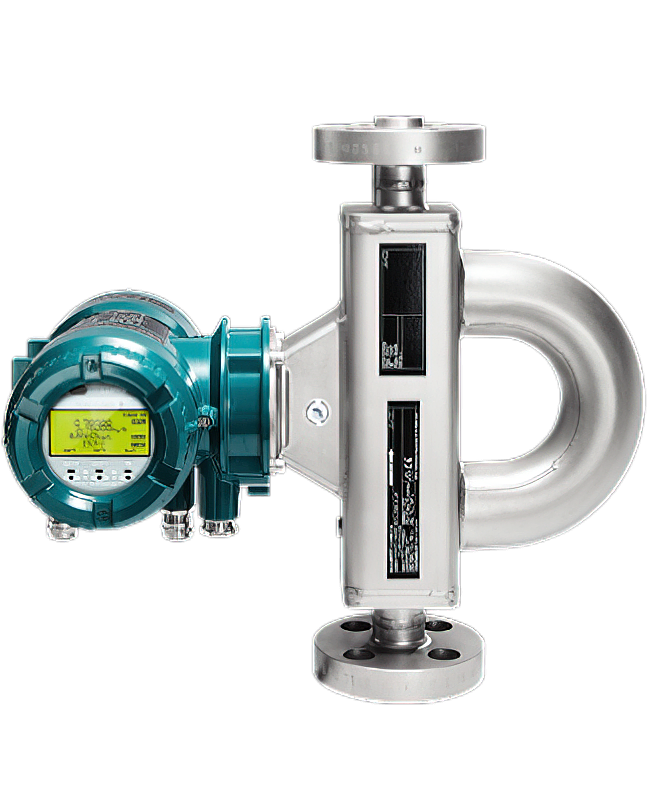
Coriolis Mass Flowmeter
When a moving mass is subjected to an oscillation perpendicular to its direction of movement, Coriolis forces occur depending on the mass flow.
- Features – Design Pressure: 345 bar while Design Temperature: 200 to 426 Deg. C
- Fluids/ Applications: Liquids (clean/ dirty/viscous/ slurries) clean /liquified gases
- Flow range: 0 – 25000 lb/m
- MOC: mostly in stainless steel, Hastelloy/titanium
- Advantages – Capable of measuring difficult handling fluids; High accuracy; No routine maintenance required since no moving parts.
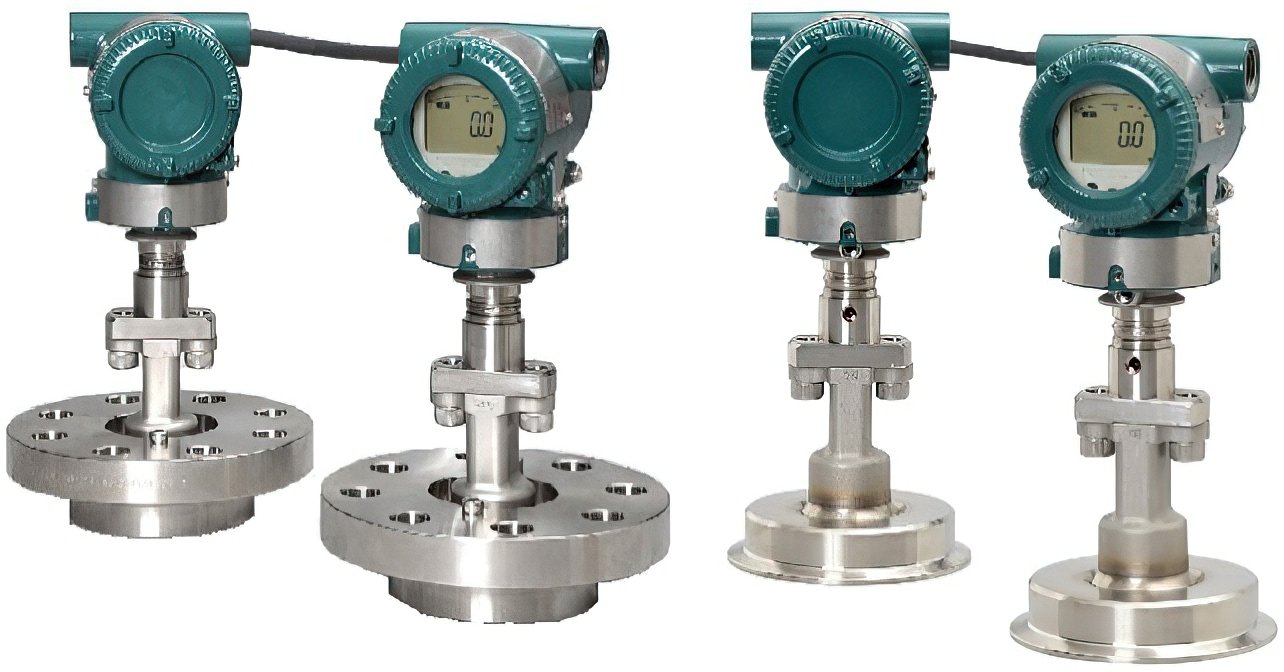
Differential Pressure Transmitters
(also called DP transmitters)are among the most versatile measuring instruments. In addition to pressure, they are used to measure level and flow in many industries, on a wide variety of fluids even at high temperatures.
- Applications: To Monitor Flow and filtration in industrial systems (Pressure Measurement, Gauge Pressure Measurement, Absolute Pressure Measurement, Vacuum Measurement, Level Measuring, Flow Measurement).
- Features: High performance, high accuracy & high reliability, Better performance over long capillaries of diaphragm seal system. Suitable for level measurement of a tall tank.
- Industries – Filtration Plants, Chemical Feeds, Wastewater Industries, Food industries, Pumping Stations.
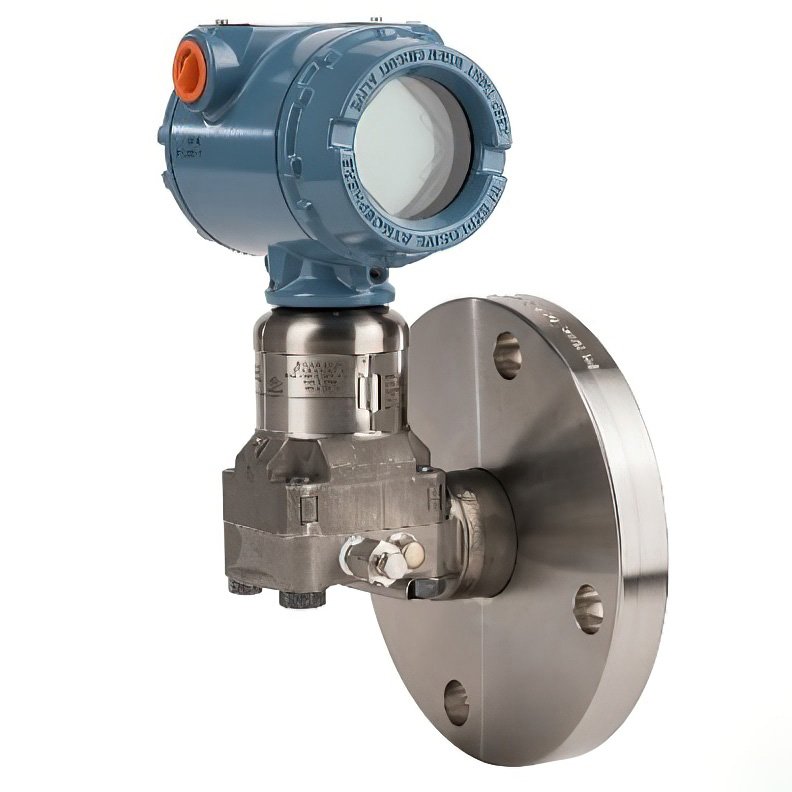
Level Transmitters
Provide continuous level measurements over the range of the system rather than at a single point and produce an output signal that directly correlates to the level in the vessel.
- Types: Capacitance Level Transmitters, Hydrostatic Level Transmitters, Magnetic Level Transmitters, Radar Fill Level Transmitters, Ultrasonic Fill Level Transmitters, Liquid Level Transmitters.
- Features: Calibrated spans, Variety of process connections including flanged, threaded, and hygienic seals, Quantified performance for the entire transmitter/seal assembly (QZ option), HART, FOUNDATION Fieldbus, and wireless protocols.